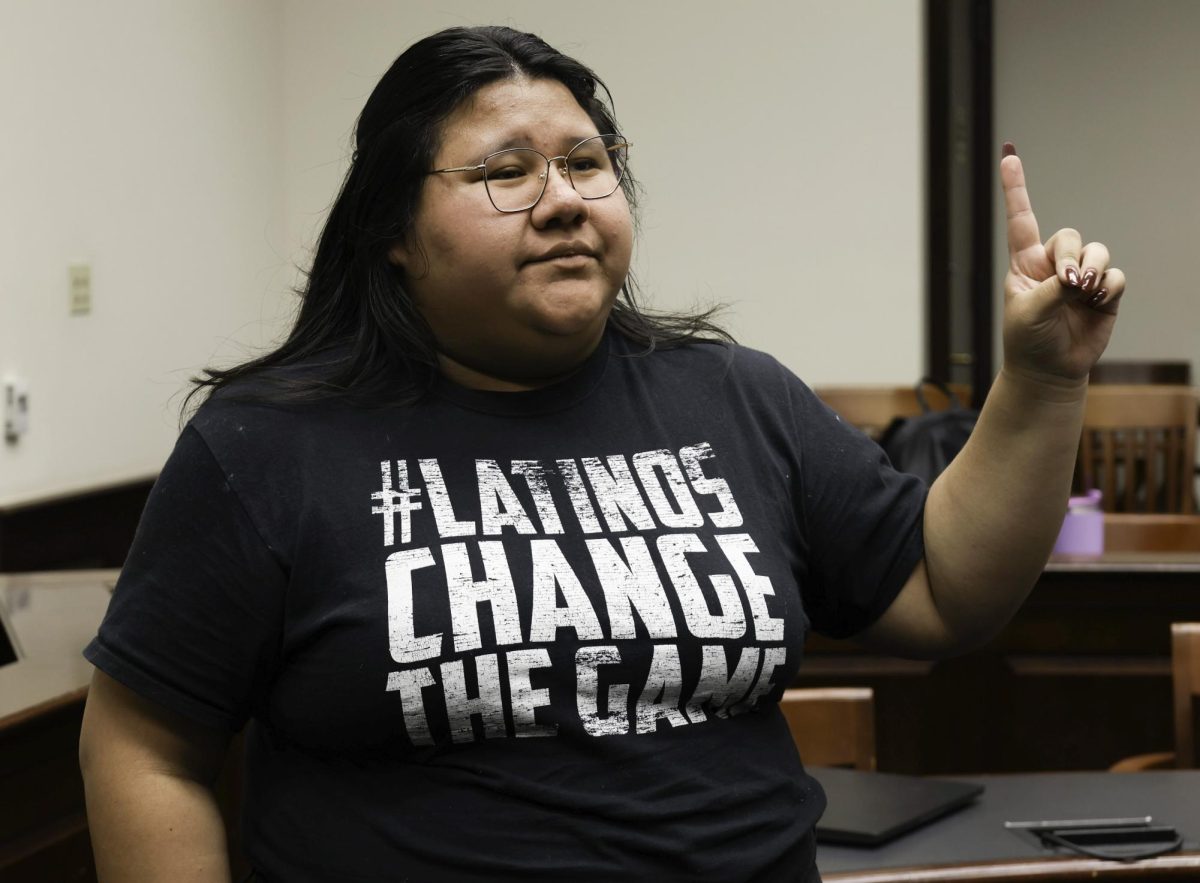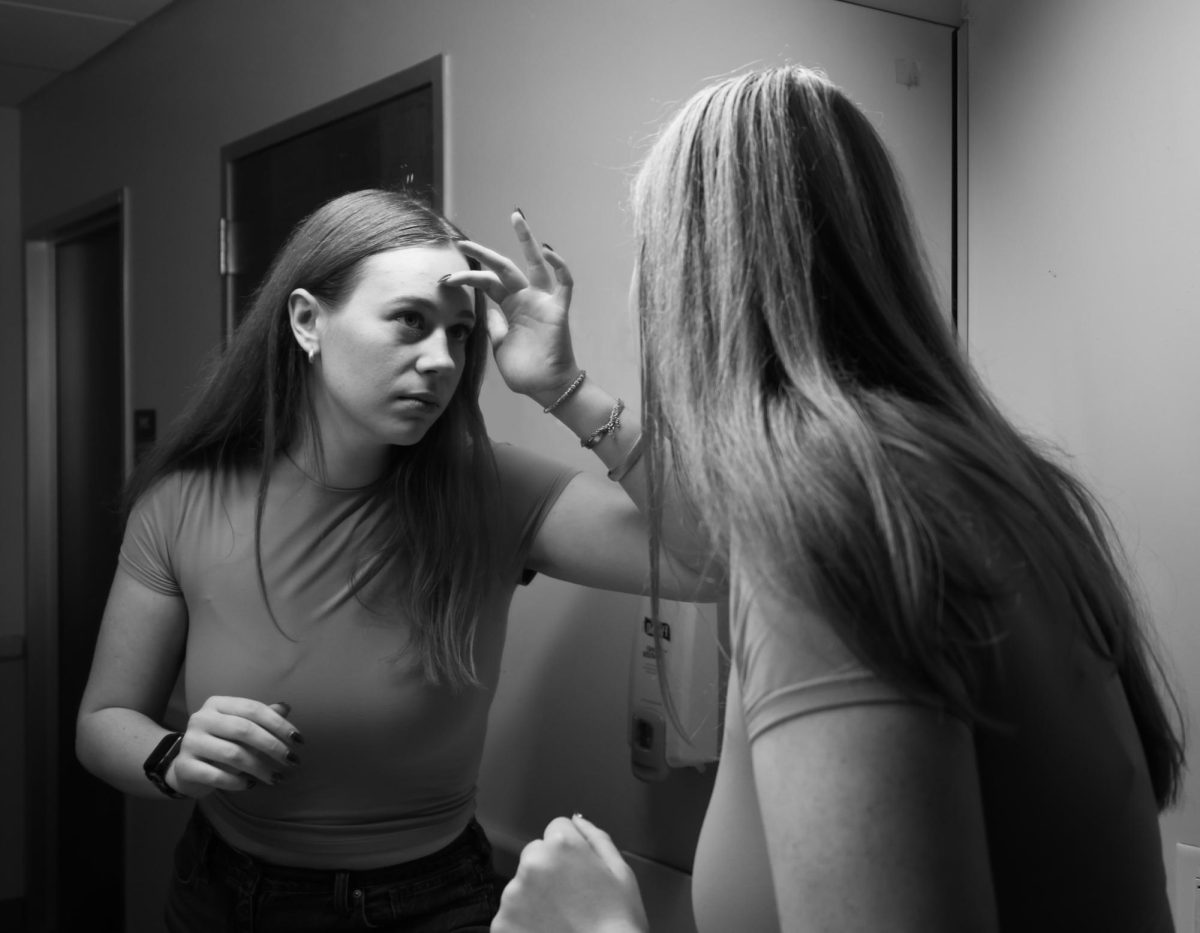Whitney Harding, a junior, competed in gymnastics since she was a little girl. She had no idea that her passion for her sport would also cause her a life of pain.
All of her hard work paid off when she received a gymnastic scholarship to North Carolina State University.
Harding said she consistently strained and stressed her body while preparing to compete and earn a college scholarship. She trained 30 hours a week while in high school and even longer in the summer.
However, the continual training and one fall ended her athletic career.
The left side of Harding’s back has two fractures, but that is far better than her right side. Her right side has two separate disks that are disintegrating, causing the bones to shift.
“After I got this news, I learned that I could become paralyzed if my back continued to shift or if I got in an accident, like a car crash or bad fall. I had to quit,” she says.
Harding, who now attends Southern Methodist University, agrees with her doctors that the continual amount of strain on her body from intense training caused and exacerbated these problems.
These days, collegiate women athletes worry whether their bodies will fall apart before reaching forty.
Ever since Title Nine passed in 1972, women’s participation in college sports has increased, but not without consequences. The number of injuries and surgeries for these young women has also increased.
Before Title Nine passed, only 325,000 women participated in high school sports and 32,000 participated in college sports. Today, over 2.5 million play high school athletics and over 150,000 compete at the college level, according to the NCAA.
Title Nine requires federally funded schools to provide equal participation and opportunities for men and women. These schools are required to accommodate the athletic opportunities for the underrepresented gender, which in most cases is women.
“Title Nine gives girls more opportunities; more opportunities cause greater participation. If participation is up so are their chances to get hurt,” says Tom Domino, a physical therapist in Plano.
He says about 80 percent of his patients are college or high school athletes. Of that figure, 60 percent are women.
Dr. Duncan Ramsey, an orthopedic surgeon in Plano, believes an increase in women playing sports in general, has caused more injuries.
“At my age, I played sports like soccer, baseball and basketball. Now schools and universities are offering so much more, especially for women, like gymnastics, crew and equitation,” he said.
Ramsey says there has been a change in mentality over the years. In the past, children tried out in several sports. Today’s children focus and specialize in only one, which can lead to more strain on certain muscle groups.
Kids are learning at a young age to compete at one thing and be good at it, especially girls.
“In the long run, we might be producing better tennis, soccer, basketball players, but we are not producing better athletes,” says Domino.
Like many of the physical trainers he works with, Domino stresses the importance of cross training to reduce the overuse on certain muscles. If someone just plays one sport, she is overusing these muscles time and time again, not giving them a break, he says.
One of the most problematic injuries for women is knees. The NCAA reports on average that 2,200 collegiate female athletes are expected to rupture their ACL an essential muscle in the knee. Women are also four to eight times more likely to get a knee injury than men.
Ramsey, who has practiced orthopedic surgery for the last 22 years, agrees with the statistics. More competition to earn spots on teams, and an increase in intense training, leads to injuries, he said.
Fortunately, problems do not go undiagnosed due to the improvements in medicine diagnosis. MRIs, once a rarity, are now commonly used, Dr. Ramsey says.
Doctors are more knowledgeable about the different muscular structure for both males and females. Women mature before men and have wider hips that place more pressure on the knee, Ramsey says. Now with more opportunities for college women to compete in sports, doctors and trainers are realizing the effects of this extra strain on women’s joints.
“I will be a cripple,” says Lainy Chafiz, a Division One college tennis player.
Chafitz has played tennis since she was 11 and is in the middle of her second season on the Texas State tennis team. She has already had shoulder surgery and continues to have issues with her strained quad.
“If I’m in pain, most people would be logical and say ‘Stop,’ but you can’t do that at a college level,” she said.
Unlike Harding, who transferred to SMU after losing her gymnastics scholarship, Chafitz can still play. She says the opportunity to compete at the college level is relatively new for women. The training is tough and continues to challenge her, but despite the damage to her body, she is not willing to give it up.








